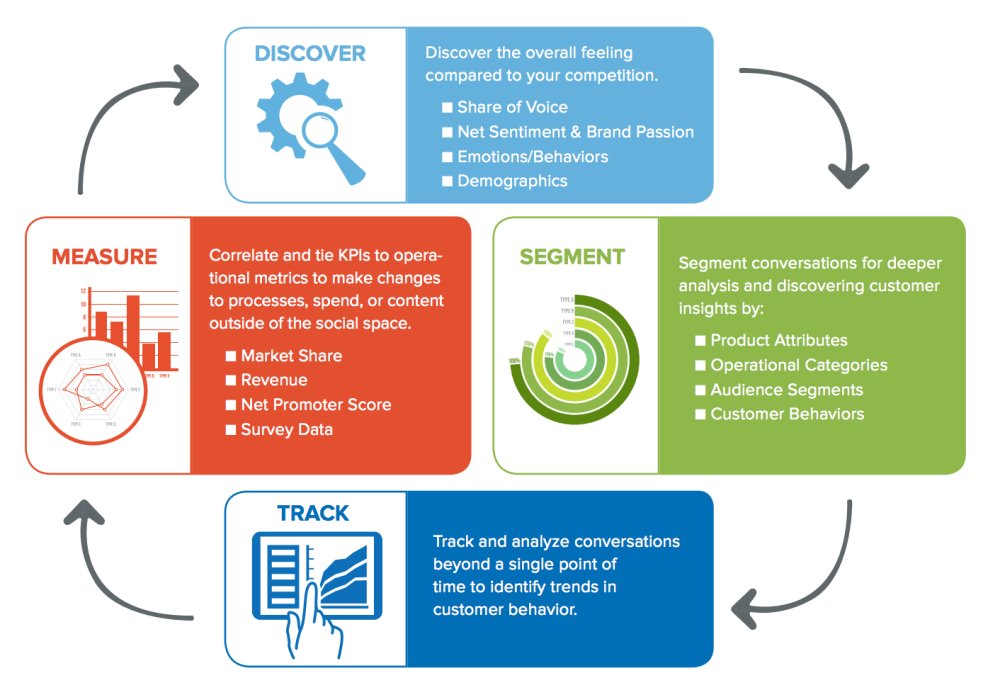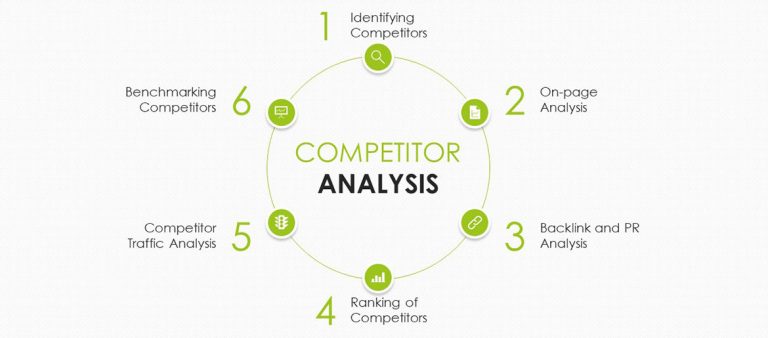Today’s competitive business world forces brands to work smarter, not harder. Every business wants to turn a good profit, and in an ideal world their business goals are created with long-term success in mind.
On the other hand, competition is fierce whatever sector you operate in. The emergence of technological innovations means everyone is better equipped to compete, which makes it even trickier to stand out from the crowd. And everyone knows it’s impossible to predict the future. You need to know what’s going on in your world, and that means competitor analysis.
As Wikipedia says, “Competitor analysis in marketing and strategic management is an assessment of the strengths and weaknesses of current and potential competitors. This analysis provides both an offensive and defensive strategic context to identify opportunities and threats. Profiling combines all of the relevant sources of competitor analysis into one framework in the support of efficient and effective strategy formulation, implementation, monitoring and adjustment.
Competitor analysis is an essential component of corporate strategy. It is argued that most firms do not conduct this type of analysis systematically enough. Instead, many enterprises operate on what is called “informal impressions, conjectures, and intuition gained through the tidbits of information about competitors every manager continually receives.” As a result, traditional environmental scanning places many firms at risk of dangerous competitive blind spots due to a lack of robust competitor analysis.”
Against a very complicated business landscape, competitive analysis stands out as a solution, a way to find out how you stand in your particular market. Are you falling behind or a front-runner? Here’s what you need to know.
Who, exactly, are your main competitors?
Some SEO Tips to Keep in Mind
Competitor analysis involves making a range of comparisons with your main competitors. But who are they? If you have a bricks and mortar premises on a real street, your competitors are the other businesses in the physical world that are near to you geographically. In the online world, your main competitors are different. They’re those whose websites pop up above yours in the Search Engine Results Pages, the SERPs. If you have both digital and physical presence, you’ll need to analyse both types of competitor separately, although you might experience some overlapping.
Grab a business advantage via competitor analysis

Your competitors are not the enemy. They’re actually a brilliant source of ideas, insight and inspiration. Don’t worry that you might find out they run their business better than you. Set your ego aside, and don’t let your feelings get hurt! After all, you can take what they do and do it even better. While it might not always feel comfortable comparing your business with others, knowing their market position and movements lets you stay on the ball, remain relevant and stay a step ahead.
Vector or Raster – Which Type of Graphics Should You Use?The many benefits of competitive analysis
Competitive analysis comes with a host of exciting business benefits.
- It lets you identify weaknesses and strengths in your own business as well as your competitors’
- It lets you understand competitor pricing, then fine-tune your own
- You learn best practice by watching and copying
- You can see how to craft a popular, relevant brand
- You discover new opportunities, markets and audiences to exploit
- It gives you the insight you need to create hard-working marketing campaigns
- It gives you a golden excuse to contact your customers to tell them about the changes you’re making
- You get clues about potential new products to develop
- You see if the things they do actually meet the needs of their customers – can you do better?
- It helps you judge the performance of competitors
- Knowing your position in the market means you make fewer mistakes
- It can expose your competitors’ goals, strategy and tactics
Harness a company database search
Preventing Liability by Using a Privacy Policy
Big Data is amazing. A company database search, for example a list of companies in Germany, provides an extraordinary amount of useful information that you can analyse, slice and dice to discover gems of data-driven wisdom about competing businesses. Actually analysing large amounts of real data delivers much more reliable insight than guessing, ‘guestimating’, or using your fatally-flawed intuition, something all humans are very bad at and something you should never rely on in a business context!
Recorded data, observable data and opportunistic data are your best friends in today’s world. Recorded data includes things like annual reports, press releases, presentations and newspaper articles. Observable data includes adverts, tenders, promotions and pricing. And opportunistic data covers things like conferences, meetings with suppliers and discussions with distributors. Company websites are great sources of comparison material, as are blogs and social media accounts.
3 steps to competitor analysis excellence
Choosing a Commercial Photographer: Things to Keep In MindThere are three main steps to take:
- Identify major competitors – including, if possible, buying and analysing their services or products
- Make a genuinely objective comparison. If you can’t be objective or don’t trust yourself to be, get someone else to do the analysis side of things for you
- Re-strategise based on what you’ve learned, doing a better job of all the things your competitors currently do better than you
A SWOT analysis is a useful tool. It looks at a business’ strengths, weaknesses, opportunities and threats, letting you cleverly dissect the competing business to a fine level of detail. Don’t forget to also carry out a SWOT analysis of your own business, to get a benchmark. Only then can you do a proper comparison.
One last tip?
Competitive analysis helps you make smarter choices. But it absolutely has to be objective, or you’ll end up with inaccurate information that is less than helpful, even potentially dangerous.







